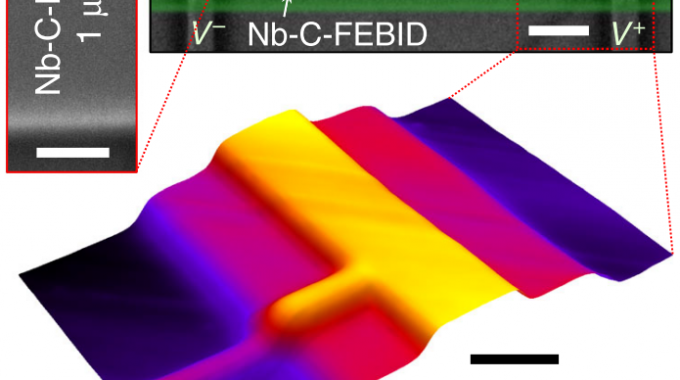
STSM of Volodymyr Bevz at the University of Vienna (Austria)
The purpose of the STSM was to explore the ultimate speed limits for the vortex motion direct-write NbC superconducting strips. It is known that the maximal current a superconductor can carry without dissipation is determined by the pair-breaking (depairing) current Idep. However, a highly resistive state in real systems is usually attained at much smaller currents due to the presence of regions in which superconductivity breaks down long before Idep is reached. Namely, in a vortex-free state, the earlier breakdown of superconductivity is due to spatial variations of the order parameter caused by structural imperfectnesses and the sample geometry. In the vortex state, fast-moving vortices are known to lead to a quench of the low-dissipative state at I* ≪ Idep as a consequence of the flux-flow instability (FFI) associated with the escape of quasiparticles (normal electrons) from the vortex cores. Accordingly, to achieve Ic ≲ Idep and high vortex velocities v ≳ 5 km/s, a high structural homogeneity and fast cooling of quasiparticles are both required. However, while short τϵ is inherent to disordered superconducting systems, few of them have Ic ≲ Idep in conjunction with weak volume pinning needed to maintain long-range order in the fast-moving vortex lattice. During the STSM, vortex dynamics was investigated in direct-write NbC strips which exhibit a rarely achieved combination of properties: weak volume pinning, close-to-depairing critical current, and fast heat removal from heated electrons. For these strips, ultra-fast vortex motion at velocities of 10-15 km/s has been demonstrated experimentally. The spatial evolution of the FFI is described using the edge-controlled FFI model, implying a chain of FFI nucleation points along the sample edge and their development into self-organized Josephson-like junctions (vortex rivers). In addition, the obtained results have offered insights into the applicability of widely used FFI models and suggested NbC to be a candidate material for fast single-photon detectors. The results are published in Nat. Commun 11, 3291 (2020).
